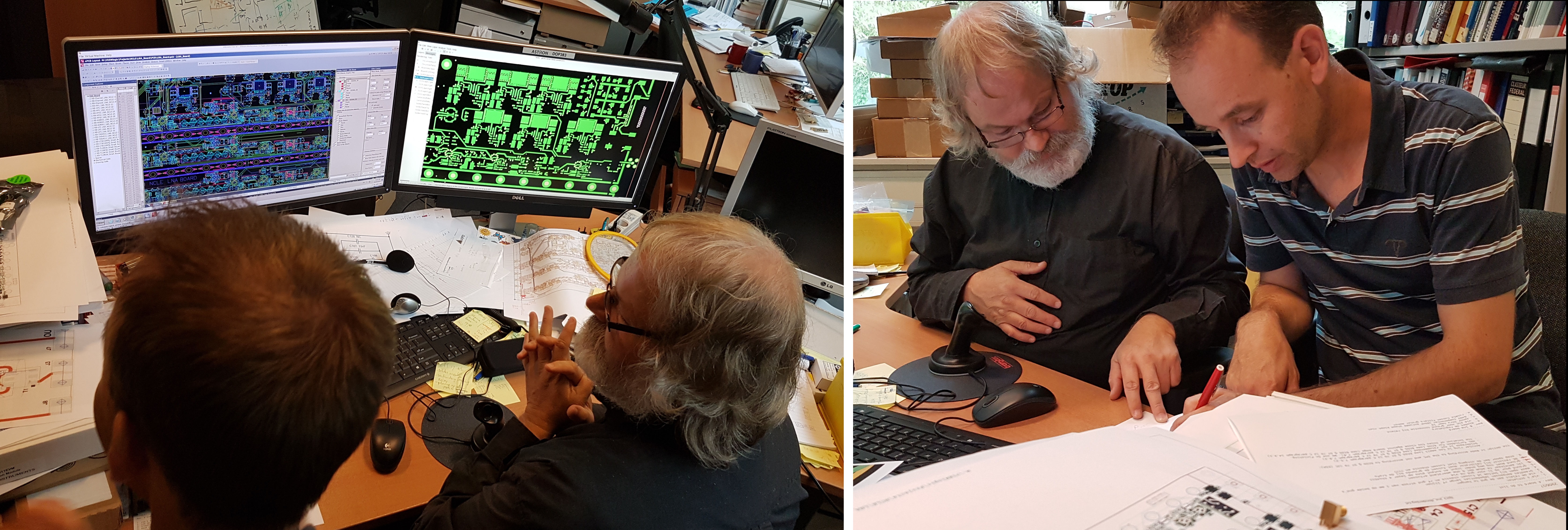Daily Image
24-05-2018En route for NCLE
| Submitter: | Ronald Halfwerk |
| Description: | Caught in action! Pictured here are ASTRON designers Mark Ruiter and Sieds Damstra fully committed to designing and routing the printed circuit board for NCLE's Low Noise Amplifier. Heavy pressure was felt in delivering in time the design for the NCLE system. Rockets do not wait for additional payload when a launch date is set! So Mark and Sieds returned to their office after sending off their families back home assuming the yearly ASTRON-JIVE BBQ (summer 2017) was about to finish. "The window of My Eyes" song still could be heard as played by our L-band (ASTRON-JIVE's house rock-band) while the after-party at the first floor went on. However, the window of the eyes of Mark and Sieds where oriented to the Mentor Graphics CAD tool which was applied to design this complex RF board for the NCLE system. The Netherlands Chinese Low-Frequency Explorer (NCLE) actually is a 3 monopole antenna system with receiver suitable for receiving frequencies from 80 kHz .. 80 MHz. Frequencies, which normally are blocked by Earth atmosphere. The LNA board conditions the (three) received antenna signals to be transported to the Analog Interface System board. It determines the frequency band, sets a large portion of the receiver noise figure and amplifies the signal to the required level. The NCLE instrument is developed and built by engineers from ASTRON, the Netherlands Institute for Radio Astronomy in Dwingeloo, the Radboud Radio Lab of Radboud University in Nijmegen, and the Delft-based company ISIS. NCLE greatly is supported by the Netherlands Space Organisation NSO. More about the NCLE mission can be found here. Apparently, the team met all deadlines as the Chinese Chang'e-4 relay satellite with on board the NCLE system, successfully lifted off atop a Long March 4C rocket from the Xichang Satellite Launch Centre at 23:28 CET on Sunday 20th (05:28 Beijing time, May 21) and is on a nine day journey to the second Earth-Moon Lagrange point (L2) some 60-80,000 kilometers beyond the Moon and nearly half a million kilometers from our planet Earth... |
| Copyright: | Photos: ASTRON / RH |
| Tweet |  |
